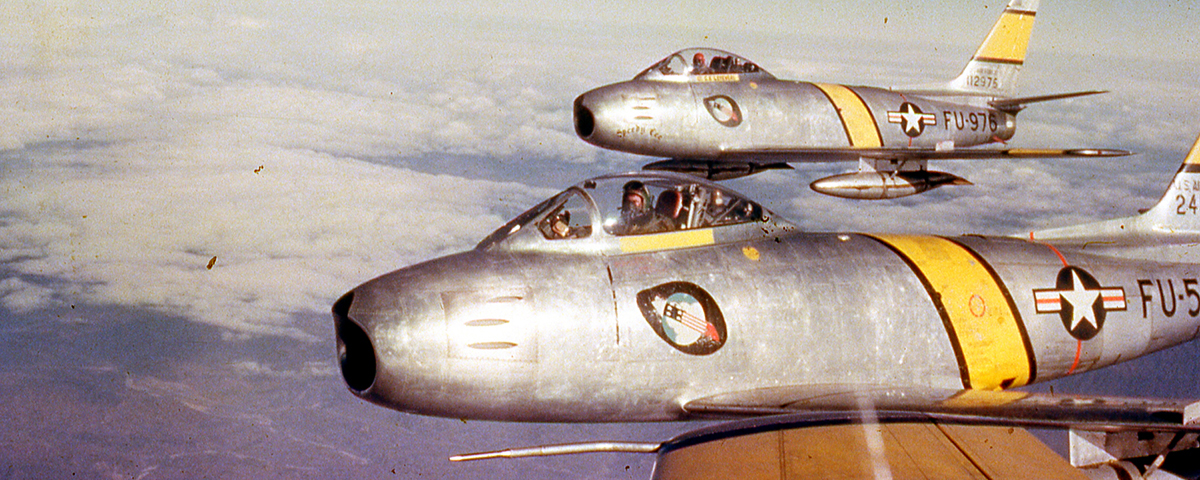President Harry Truman described it as a United Nations “police action,” and today it is regarded as the “Forgotten War,” falling as it did between the global conflagration of World War II and the national trauma of the Vietnam War. The North Koreans, who ignited the conflict when they attacked across the Korean peninsula’s 38th Parallel on June 25, 1950, referred to it as the “Fatherland Liberation War.” Whatever name it goes by, the Korean War cost 36,574 American lives and resulted in an estimated 2.5 million civilian casualties.
From an air combat perspective, the Korean War marked a sea change in equipment and tactics. It was the first conflict in which jet aircraft played a central role, as the propeller-driven fighter-bombers of the war’s first months gradually gave way to a new generation of turbojet-powered airplanes. During its initial stages, piston-engine aircraft such as the Vought F4U Corsair and Douglas AD Skyraider performed yeoman service in the ground-attack role, particularly after China entered the war en masse in late October 1950, when naval air power helped keep the Marines trapped at the Chosin Reservoir from being overrun. Later, in the fall of 1951, prop-driven bombers mixed it up with jet interceptors in two wild aerial battles, with predictable results.
The introduction of the Soviet-built MiG-15 interceptor in October 1950, countered by the debut in December of North American’s F-86 Sabre (powered by GE’s J47 turbojet), ushered in a new era of jet-versus-jet air combat. The MiGs—many, it was later revealed, flown by Soviet World War II veterans—proved difficult opponents in the airspace near the Chinese border known as “MiG Alley.” American Sabre pilots with the 4th Fighter Interceptor Wing chalked up an impressive record against Communist pilots, though even top U.S. aces sometimes fell victim to the MiG-15’s cannons.
The Korean Armistice Agreement, signed on July 27, 1953, was designed to ensure “a complete cessation of hostilities and all acts of armed force in Korea until a final peaceful settlement is achieved.” That peaceful settlement never came, and since no peace treaty was ever signed, the war never officially ended.
Today the United States faces the specter of a nuclear-armed North Korea, led by an unpredictable, if not unhinged, dictator who has threatened to carry out a preemptive nuclear attack on American cities. This at a time when outgoing U.S. Secretary of the Air Force Deborah Lee James admits, “Our commanders have indicated that less than 50 percent of our combat air forces are ready for the high-end fight, a conflict with a major air power with sophisticated integrated air defenses and the ability to shoot us down.” Secretary James adds that “We are working hard to fix this. But what we need is people, money and time.”
Thus the U.S. now finds itself in a situation that in some ways is analogous to the scenario that played out in the early days of the Korean War, when the nation was unprepared for a major conflict. Let’s hope that if another similar conflict ignites, America’s military forces once again rise to the occasion. For her part, James is confident: “I have no doubt that, if called upon, our airmen would be able to conduct that fight successfully.”

